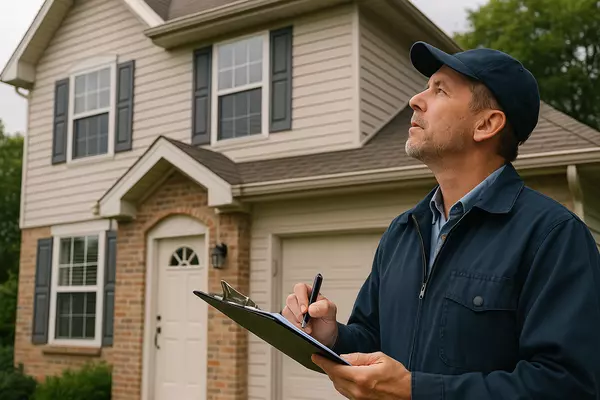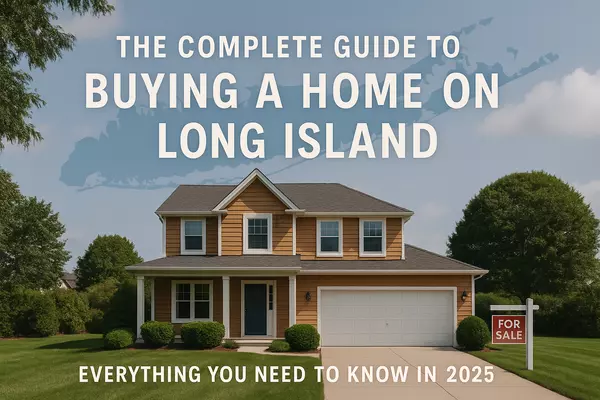Protect Your Investment: Environmental Factors Every Long Island Buyer Must Know

At Dream Select Realty, we understand how important it is to protect and preserve the beautiful landscapes of Long Island. Both Nassau and Suffolk Counties offer scenic coastlines, bustling suburban neighborhoods, and patches of rich farmland—along with unique environmental challenges. Whether you’re buying, selling, or investing in real estate, knowing about environmental factors can help you make smarter decisions and safeguard your property against future risks. In 2025, it’s more critical than ever to be aware of how climate change, flood risks, and new energy efficiency requirements affect the value and livability of your home.
In this article, we’ll discuss the impact of climate change on Long Island real estate, how to assess flood risks in Nassau and Suffolk, and the growing importance of energy-efficient properties. By understanding these key environmental considerations, you’ll be better equipped to find a home that meets your needs while remaining a responsible steward of the local environment.
Table of Contents
- Climate Change Impact on Long Island Real Estate
- Flood Risk Assessment in Coastal Areas
- Energy Efficiency Requirements for 2025
- Green Home Upgrades and Their Benefits
- Balancing Development and Conservation
- How Dream Select Realty Helps
- Financing and Incentives
- Planning for the Future
- Practical Tips for Homeowners
- Conclusion
Climate Change Impact on Long Island Real Estate
Rising Sea Levels and Coastal Erosion
Long Island is surrounded by water, which is one of its greatest appeals—breathtaking beaches, vibrant marine life, and plentiful water activities. However, climate change brings rising sea levels that threaten to erode these beloved shorelines. Some areas are already experiencing increased flooding during high tides. As sea levels rise, coastal properties may face more frequent water damage and higher insurance costs.
- Property Value: Properties situated right near the water tend to command higher prices. But if the shoreline recedes or floods become more common, some of these prized homes could lose value.
- Maintenance Costs: Saltwater intrusion and wave action can damage docks, bulkheads, and even foundations. Homeowners may have to invest more in repairs and protective measures.
- Investment Risk: People who plan to buy and hold property for many years must consider how sea level rise might affect their investment. An informed choice now can help avoid costly surprises later.
Storm Frequency and Intensity
Another consequence of climate change is the possibility of stronger, more frequent storms. Hurricanes, tropical storms, and Nor’easters can bring high winds, heavy rains, and flooding. Homes in flood-prone regions or near the coast will see an increased need for hurricane-grade windows, storm shutters, or elevated foundations.
- Local Governments: Many towns in Nassau and Suffolk are upgrading infrastructure like drainage systems and seawalls to mitigate storm damage.
- Neighborhood Resilience Plans: Some communities organize volunteer groups or develop storm evacuation plans to help each other during severe weather.
Shifts in Buyer Preferences
As more people become aware of climate change, buyers are looking for features like raised foundations, better drainage, and energy-efficient designs. Homes that are well-prepared for extreme weather or that incorporate sustainable elements may have an advantage in the market.
Flood Risk Assessment in Coastal Areas
Understanding Flood Zones
The Federal Emergency Management Agency (FEMA) designates certain parts of Long Island as high-risk flood zones. If your property lies in these zones, you may be required to carry flood insurance, which can be costly. Even if you’re not in a high-risk zone, local flooding is still possible during severe storms.
- FEMA Flood Maps: You can view official FEMA maps online to see if a property is in a flood zone.
- Town or County Assessors: Local authorities often have additional data, such as storm surge projections, that refine FEMA’s maps.
- Real Estate Professionals: At Dream Select Realty, we can guide you through the map-reading process and point you toward trusted insurance providers and surveyors.
Evaluating Property Elevation and Drainage
A key part of flood risk assessment is looking at the property’s elevation relative to sea level. Homes built higher—on stilts or with raised foundations—are less likely to experience major flood damage. Proper drainage systems, including storm drains and grading that directs water away from the home, also reduce flooding risk.
- Home Inspection: A detailed inspection can reveal if the basement or crawl space has experienced past flooding.
- Check for Watermarks: Water stains on walls or foundations can indicate recurring flood problems.
- Ask About Drainage: If the home uses sump pumps, French drains, or other systems, find out their age and maintenance history.
Bulkheads, Sea Walls, and Other Barriers
Coastal properties often use bulkheads or sea walls to prevent erosion and flooding. However, these barriers need regular maintenance and can be expensive to repair or replace. If you’re buying a waterfront home, make sure these structures are in good condition. A professional marine contractor or inspector can evaluate their stability and lifespan.
Energy Efficiency Requirements for 2025
State and Local Regulations
New York State has been proactive about reducing carbon emissions and encouraging green building practices. By 2025, Nassau and Suffolk Counties are likely to adopt or strengthen energy efficiency codes. These codes could include requirements for better insulation, more efficient heating and cooling systems, and even pre-wiring for electric vehicle charging stations.
- Building Codes: New and renovated homes may have to meet stricter energy efficiency standards.
- Green Certifications: Some buildings may pursue LEED (Leadership in Energy and Environmental Design) or other green certifications to show they adhere to high environmental standards.
- Solar Mandates: While not universally required, solar-friendly policies are on the rise. Some areas offer incentives for installing solar panels, which can reduce energy bills and carbon footprints.
Benefits of Energy Efficiency
- Lower Utility Bills: Efficient appliances, good insulation, and smart thermostats help cut electricity and heating costs.
- Higher Resale Value: Many buyers are willing to pay more for a home that’s already equipped with green features.
- Comfort and Health: Proper insulation can keep homes warmer in winter and cooler in summer, and better air circulation can improve indoor air quality.
Green Home Upgrades and Their Benefits
Popular Eco-Friendly Upgrades
- Solar Panels: Harnessing the sun’s energy can significantly reduce electricity bills. Solar systems can also generate surplus power, which homeowners can sometimes sell back to the grid.
- High-Efficiency HVAC Systems: Modern heating and cooling units use less energy while maintaining a comfortable indoor climate.
- Energy-Saving Windows: Double or triple-pane windows keep conditioned air inside, reducing the load on HVAC systems.
- LED Lighting: LED bulbs use far less energy and last longer than traditional bulbs.
- Smart Home Controls: Smart thermostats, automated lighting, and intelligent power strips optimize energy use throughout the day.
Environmental Impact
Investing in green upgrades not only lowers your bills but also reduces your carbon footprint. By choosing efficient appliances or adding solar panels, you’re helping reduce greenhouse gas emissions. This is especially important on Long Island, where dense populations and extensive commuting can contribute to higher energy demands.
Long-Term Savings
While some eco-friendly improvements have a higher upfront cost, they generally pay for themselves over time through reduced utility bills. Over a span of 10 to 20 years, homeowners often find that green upgrades save them thousands of dollars. Additionally, having a green-certified or energy-efficient home can give you a competitive edge in future markets, where environmental responsibility is increasingly valued.
Balancing Development and Conservation
Preserving Natural Habitats
Long Island hosts diverse ecosystems, from sandy dunes and coastal wetlands to pine barrens. Rapid development can threaten these habitats, reducing animal populations and weakening natural flood barriers like wetlands. Many towns in Nassau and Suffolk have environmental review processes in place to ensure that new construction doesn’t damage ecologically sensitive areas.
- Wetland Protection: Building near wetlands often requires special permits.
- Open Space Initiatives: Local governments and nonprofits sometimes purchase undeveloped land to preserve it for future generations.
- Tree Preservation Laws: Some towns require permits to remove large trees, aiming to maintain green cover and reduce erosion.
Responsible Development Practices
Builders and homeowners can adopt environmentally friendly methods:
- Rain Gardens: Landscaping that directs runoff into planted areas helps filter water and reduce flooding.
- Permeable Pavement: This allows rainwater to soak into the ground instead of running off into storm drains.
- Native Plantings: Using local plants in landscaping supports native wildlife and requires less water and maintenance.
How Dream Select Realty Helps
Local Expertise
Our agents at Dream Select Realty specialize in Nassau and Suffolk Counties. We understand the unique environmental challenges each region faces—from coastal flood risks in the Hamptons to stormwater management in suburban neighborhoods. When you work with us, we’ll provide insights about:
- Historical Flood Data
- Zoning and Conservation Rules
- Local Building Codes
- Green Retrofit Opportunities
Personalized Advice
Every homebuyer or seller has different needs. If you’re looking for a coastal property, we’ll show you how to assess sea walls and check flood zones. If you want to reduce your environmental impact, we’ll highlight homes that already have solar panels or modern HVAC systems. By listening to your goals, we can match you with properties that fit your lifestyle and budget.
Connections with Professionals
Navigating environmental regulations can be tricky, especially if you’re new to an area. Over the years, we’ve built strong relationships with local inspectors, attorneys, contractors, and green energy specialists. If you need a bulkhead inspection or want advice on a solar panel installation, we can refer you to experienced professionals you can trust.
Financing and Incentives
Green Mortgages and Loans
Some lenders offer special “green mortgages” that provide better interest rates or loan terms for homes that meet certain energy efficiency standards. If you plan to install solar panels or make eco-friendly upgrades, you may qualify for additional financing assistance.
- Energy Efficient Mortgages (EEMs): These are FHA or VA-backed loans that factor in potential energy savings, allowing borrowers to qualify for slightly larger loan amounts.
- HomeStyle Energy Mortgages: Fannie Mae’s program lets you finance energy improvements as part of your mortgage.
Government Rebates and Tax Credits
Federal and state programs often provide financial incentives to encourage energy-saving home improvements. Although these programs change over time, popular incentives include:
- Tax Deductions or Credits: Homeowners might write off a portion of the cost for installing solar panels or energy-efficient equipment.
- Utility Rebates: Local utility companies sometimes offer rebates for purchasing high-efficiency appliances or smart thermostats.
- Grants: In some cases, local or state governments provide grants to encourage green renovations, especially in neighborhoods prone to flooding or storm damage.
Planning for the Future
Adaptation Strategies
With ongoing climate changes, Long Island must adapt. From redesigning homes to elevate living spaces above potential floodwaters to retrofitting older structures with storm-proof features, there’s a growing trend toward resiliency. Property owners should plan for:
- Flood-Proof Basements
- Stronger Roofing Materials
- Backup Power Systems
Sustainable Community Development
Local governments and private developers increasingly focus on sustainable models of community planning. Mixed-use developments that reduce the need for cars, expansions of public transportation, and the protection of natural barriers like dunes and wetlands all help build a more resilient Long Island.
The Role of Technology
- Smart Irrigation: Sensors in the soil can determine when lawns or gardens need water.
- Real-Time Flood Tracking: Some communities use sensors and apps that give residents up-to-date flood warnings.
- Home Energy Monitoring: Tools that show real-time energy consumption can encourage more mindful usage.
Practical Tips for Homeowners
Regular Inspections and Maintenance
- Roof and Gutters: Clean gutters and check for leaks to prevent water backup and interior flooding.
- Foundation Checks: Look for cracks or signs of moisture intrusion, especially in basements.
- Window and Door Seals: Ensure seals are tight to keep out drafts and water during storms.
Landscaping for Resilience
- Plant Trees and Shrubs: Trees can offer shade to reduce summer cooling costs. Shrubs and grasses help hold soil and filter stormwater.
- Create Drainage Channels: If your yard tends to flood, install a swale or French drain to direct water away from your home.
- Use Native Plants: They adapt well to local climate conditions and require less water and chemical fertilizers.
Staying Informed
Laws and incentives change. Long Island towns may alter local zoning rules to account for increased flooding or impose stricter energy codes. At Dream Select Realty, we recommend subscribing to local town newsletters, following county websites, and connecting with environmental groups that track relevant legislation. We also keep our clients updated on major changes through our market insights and newsletters.
Conclusion
As climate change continues, Long Island’s real estate landscape is evolving. Homes that once seemed perfectly safe might find themselves facing new flood risks, while cutting-edge, energy-efficient properties attract environmentally conscious buyers. By understanding these environmental considerations—rising sea levels, flood risks, and the benefits of going green—you can make choices that not only protect your investment but also contribute to a sustainable future for Long Island.
At Dream Select Realty, we’re committed to helping you navigate this complex environment. Our team of experts stays on top of the latest regulations, incentive programs, and design trends so that you can move forward with confidence. Whether you want a waterfront home with extra flood protections or a suburban property loaded with green features, we’ll guide you to the options that align with your values and lifestyle. Together, we can ensure that your real estate decisions are both financially sound and environmentally responsible, keeping Long Island a wonderful place to live for generations to come.
Categories
Recent Posts










